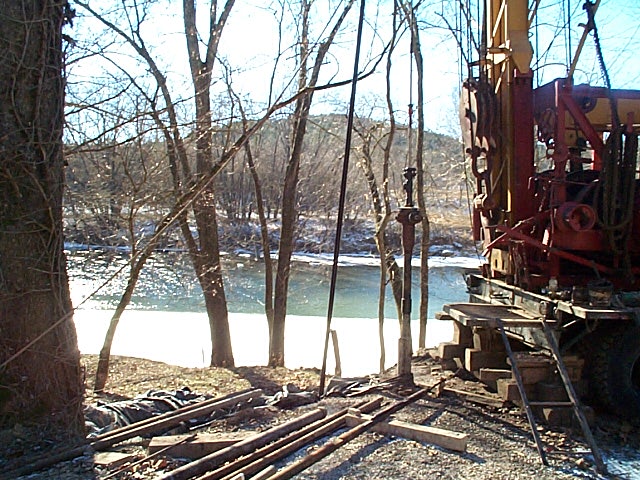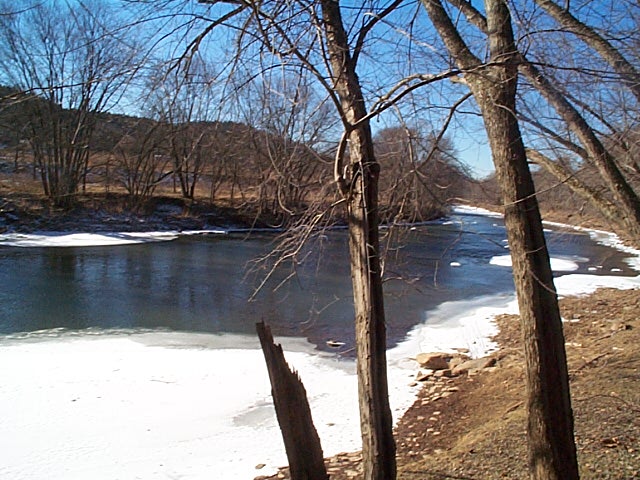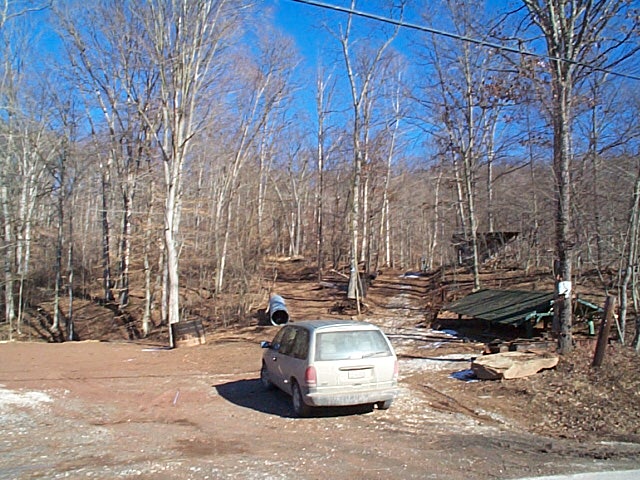2001: OIL FLOWS AGAIN FROM RATHBONE WELL - Historic Site Recalls Fascinating Tales
By Bob Weaver 2001
The historic Rathbone Well of Burning Springs is back in "business" after it was first drilled in 1860. Parkersburg's Oil and Gas Museum is behind the resurrection of the site, and is developing a roadside park along Route 5, according to curator David McKain. Perkins Oil and Gas has opened up the 480 foot well and "oil and gas is coming out again." McKain said the original well was 139 feet deep.
Col. Edwin Drake drilled the first oil producing well in Titusville, Pennsylvania a mere six months before the Rathbone well became a producer. The Burning Springs well, according to historian Howard B. Lee, began producing seven barrels a day for $20 a barrel.
Free-flowing oil was discovered by early Little Kanawha River explorers Jesse and Elias Hughes and William Lowther, who spotted the burning oil springs. They traveled through and identified locations as early as 1782. The area was known as "Burning Springs" as early as 1828.
The early settlers and visitors regarded oil as "nature's wonder cure" for many ailments and sold the "medicine" for fifty cents a quart. William Palmer Rathbone came from New York in 1840 to become the areas principal landowner and businessman. Rathbone joined with well known Parkersburg businessman Johnson N. Camden and his associates in drilling ventures. News of the oil strike spread up and down the east coast, causing a "wild rush" to Burning Springs.
Lee says the village gained a population of 6,000 people, but Curator McKain says those numbers may be inflated. Landlords erected dozens of make-shift dwellings to house the speculators to the "black gold rush" of Wirt County. Camden constructed an oil refinery in Parkersburg.
On the hillside above what is now Route 5, speculators built the notorious "Chicago House" which is said to have been a twenty-one room saloon, hotel, gambling joint and house of "ill repute." Lee says at least a half dozen other brothels sprung up on the hillside, with six to ten women in each house.
The Chicago House was burned to the ground during a Rebel invasion in 1863. General Robert E. Lee sent two small task forces into the area to "gather supplies." Another mission was to destroy railroad lines. The troops did their collecting from Buckhannon to Cairo, after which they turned toward Burning Springs.
The town's residents had a three-hour warning the Rebels were coming to destroy the oil field and steal the horses. Teamsters hurriedly loaded supplies, whiskey and equipment on wagons and "took off up Burning Springs Run." The Rebs made no attempt to follow them.
Val Rathbone attempted to deal with the Rebel commanders, but he did not have enough cash to ransom the town. At 11 a.m. on May 9, 1863 the town and its oil field was destroyed - derricks, storage basins, engine houses, sawmills, lumber, cooperage, plus five fully loaded barges. Engines and boilers were dynamited.
The Little Kanawha became a river of fire down to Elizabeth, thirteen miles away, burning most everything on either side of the river.
It is this historic place and time that will be remembered along Route 5, an extension of the Oil and Gas Museum of Parkersburg.

Rig brings Rathbone Well to life again

Burning Springs was burned and the Little Kanawha became "river of fire"

Parking area across Rt.5